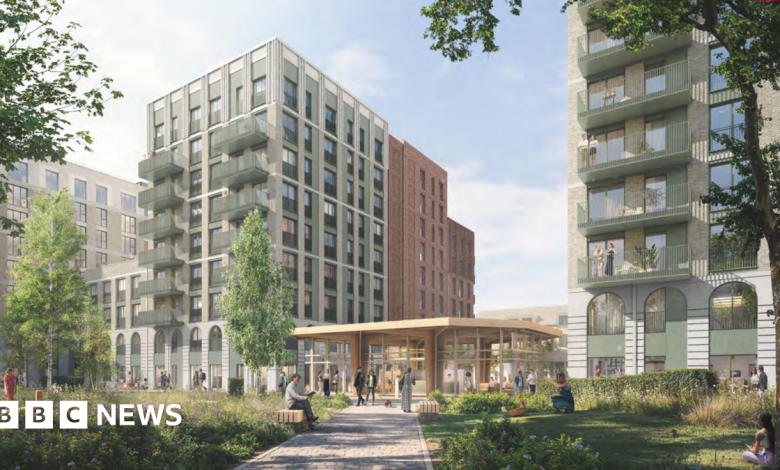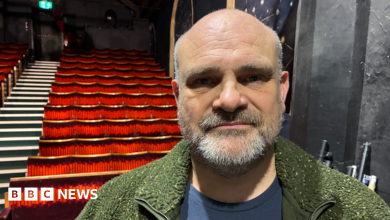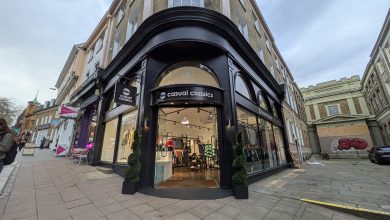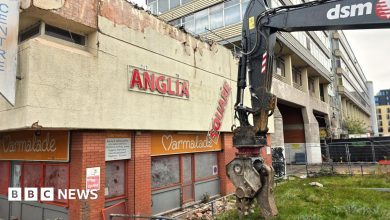Former Marsh site in Norwich could become 432 rental homes

Revitalizing Urban Space: A New Vision for Community Living
The proposed development seeks to transform an existing site into a vibrant, park-like community space that balances urban living with natural elements. Rather than imposing a stark concrete landscape, the design emphasizes a “buildings within a park” concept, where green spaces flow throughout the development, creating a more organic and welcoming environment for residents and visitors alike. At the heart of this vision lies a central pavilion, thoughtfully designed to serve as the main entrance to the community, providing an architectural focal point that sets the tone for the entire development and offers a warm welcome to all who enter.
Along Queens Road, five elegant tower blocks of eight and nine storeys would rise, carefully designed not to exceed the height of the previous building that occupied the site. This consideration for the existing skyline demonstrates a respect for the neighborhood’s character while still offering modern living spaces. These main buildings aren’t merely residential structures but are envisioned as lifestyle hubs, potentially featuring amenities that foster community interaction and wellbeing, such as a cinema room for shared entertainment experiences, a gym to promote physical health, co-working areas to accommodate the evolving nature of work, and lounge and event spaces where residents can gather, socialize, and build meaningful connections.
Behind these primary towers, five slightly shorter blocks would create a second tier of residences, creating architectural depth and visual interest to the overall scheme. A thoughtfully planned new road would run through the site, serving not only as practical infrastructure but as a deliberate design element that creates a natural boundary between these apartment blocks and a collection of three- and four-storey townhouses. This varied approach to housing types ensures the development can accommodate diverse living preferences and family situations, from individuals seeking apartment living to families requiring the additional space and privacy of townhouse accommodations.
The development doesn’t focus solely on residential needs but acknowledges the importance of mixed-use spaces in creating a thriving community. Near St Stephens roundabout, plans include a dedicated business unit that could bring employment opportunities closer to home for residents. Adjacent to this, a flexible-use block offers possibilities for community-enhancing services such as a café where neighbors could meet over coffee, fostering the small, everyday interactions that build community bonds. These commercial elements are strategically positioned to serve both residents and the wider neighborhood, helping to integrate the new development into the existing community fabric.
The entire design philosophy appears to embrace contemporary urban planning principles that prioritize human-scale developments, walkability, and the creation of spaces where people naturally want to gather. By incorporating substantial green spaces throughout, the development addresses growing awareness of nature’s importance to mental wellbeing and environmental sustainability. Rather than creating an isolated residential enclave, the varied building heights, mix of housing types, and inclusion of commercial spaces suggests an attempt to create a more authentic neighborhood experience that evolves organically over time.
What makes this development concept particularly noteworthy is its apparent respect for both the past and future of the area. By maintaining building heights consistent with previous structures, while introducing modern amenities and design approaches, the plan strikes a balance between preservation and progress. The integration of green space, varied housing options, and mixed-use areas reflects an understanding that successful urban developments must do more than provide shelter—they must create environments where communities can flourish, people can connect, and daily life becomes more enjoyable and sustainable. This holistic approach to urban design recognizes that the spaces between buildings are just as important as the structures themselves in creating places where people truly want to live.








